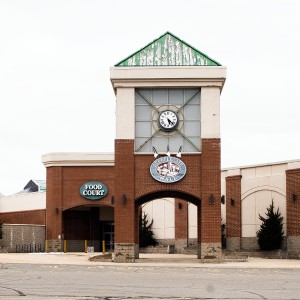Vintage Views: Roads to the past
| Published: 03-04-2023 7:35 PM |
There are times when we travel the long way home, that extra moment of solitude so very needed. We might also take a road to a place there is a need to visit, or perhaps it brings you back to where you started your journey. To this very day there are roads across our beloved Rattlesnake Hill that simply lead us to the past.
Growing up in Concord, I visited the various granite quarries during the summer months for a refreshing swim, a daring jump off a high cliff, or found some solitude in the forest surrounding a campfire. I enjoyed my childhood hiking Rattlesnake Hill and swimming in the quarries, in particular Perry’s Quarry. Some people preferred Swenson Quarry or New England Quarry, as well as some of the smaller quarries such as Fish or Cat & Dog.
As the prison labor quarried granite from Rattlesnake Hill over 150 years ago, many trails and paths were cut to allow access to the developing quarry trade. As the business developed over the next decades the hill had over a 1,000 men working each day on a year-round basis. The large sections of quarried granite were hauled down the hill on wagons led by oxen or strong horses to cutting sheds near North State Street. During the winter months the men still worked in the quarries and the wagons hauling the granite to the stone sheds for processing were simply traded for large sleighs until spring. The roads were rough and the journey down the hill was both difficult and dangerous.
On Nov. 19, 1897, the Concord City Council contacted the Concord Engineer and requested that he study Rattlesnake Hill to determine if a survey might be obtained, roads built to each quarry and perhaps even a spur line for the railroad to access the hill eliminating the need for the wagons and sleighs. The Council certainly had the thought of commerce in mind and a desire to further develop the already very successful granite industry.
Prior to the building of the Boston, Concord & Montreal railroad we saw granite as well as other freight being transported from Concord to Boston by wagons led by teams of horses. The only other method for transporting the early harvested granite as well as other goods was the Concord & Boston Boating Company. As the possibility of new roads and rails on Rattlesnake Hill was being planned in the year 1898 all of the granite was being transported by the Boston & Maine railroad, after essentially leasing the railroad and offering reduced prices for transporting freight to Boston. The quality roads that we walk to this very day on Rattlesnake Hill are the result of the decision by the Council ordering the City Engineer to investigate and survey the hill. It was within a year tha the council meeting that construction started to build the roads, referred to as “Branch Roads” on Rattlesnake Hill. With completion in 1898 we find Rattlesnake Hill with a series of quality branch roads leading to each of the main quarries, the advantage being the attraction to additional businessmen seeking access to the hill for new quarry operations. During this period, my Great Grandfather Martin Spain invested in his own quarry and walked the newly created road each and every morning. Once he selected and cut his granite ledges, he loaded the granite onto his wagon and transported it to the bottom of the hill for processing. Once processing was completed his finished pieces were sold and loaded onto the railroa d in route to Boston and further points beyond.
]]>
Yesterday's Most Read Articles
 Neighboring landowner objection stalls Steeplegate redevelopment approval
Neighboring landowner objection stalls Steeplegate redevelopment approval
 As N.H. coal-fired plants shift to solar, offshore wind beckons
As N.H. coal-fired plants shift to solar, offshore wind beckons
 Body of long-missing hiker found, pinned by boulder in Dry River
Body of long-missing hiker found, pinned by boulder in Dry River
 Baseball: Undermanned, Belmont battles against one of the state’s top pitchers
Baseball: Undermanned, Belmont battles against one of the state’s top pitchers
 UNH seeks vandal who accused university of genocide in spray-painted message
UNH seeks vandal who accused university of genocide in spray-painted message
 UNH Faculty Senate calls on university to investigate police response to protest
UNH Faculty Senate calls on university to investigate police response to protest







 As site testing begins on new middle school site, activists file to put location debate on the ballot
As site testing begins on new middle school site, activists file to put location debate on the ballot For the first time, education commissioner speaks publicly about minimum standards revision, but he faces skepticism
For the first time, education commissioner speaks publicly about minimum standards revision, but he faces skepticism Adam Montgomery sentenced to minimum 56 years on murder charges in young daughter’s death
Adam Montgomery sentenced to minimum 56 years on murder charges in young daughter’s death
